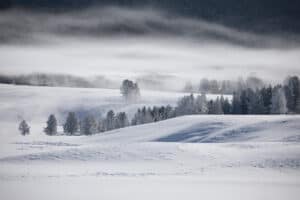Animals are ever present in myths and old stories, and Christmas is no exception. The most wonderful time of year brings along some animals that have shaped how we experience the holiday season. We simply can not exclude these animals from the festivities!
We will look at the old tales that gave these animals recognition and share some must-know facts about them. Join us and explore these beautiful creatures and the reasons why Christmas would not be complete without them!
Reindeer

The poem titled “A Visit from St. Nicholas” is the first work to place reindeer at the front of Santa’s sleigh.
©Vladimir Melnikov/Shutterstock.com
No Christmas would be possible without Santa Claus and his reindeer. Pulling a sleigh loaded with presents is no easy task. With that, nine reindeer accompany Santa each year on his fantastic journey. The reindeer are named Dasher, Dancer, Prancer, Vixen, Comet, Cupid, Donner, Blitzen, and the most famous of all, Rudolph.
We first heard about Santa’s reindeer in 1823, thanks to a poem called “A Visit from St. Nicholas.” This poem — better known as “The Night Before Christmas — narrates a man’s meeting with Santa. Only the first eight reindeer had names in the poem — Rudolph wouldn’t exist until 1939 when Robert L. May published his story called “Rudolph the Red-Nosed Reindeer.”
Reindeer were domesticated around 3,000 years ago to help native populations by pulling sleighs through the snow. That is not the only reason Santa chose them, though. Reindeer have many traits that make them perfect for delivering gifts during Christmas. They can see very well in the dark, are fast runners, and travel immense lengths every year without getting lost.
Camels
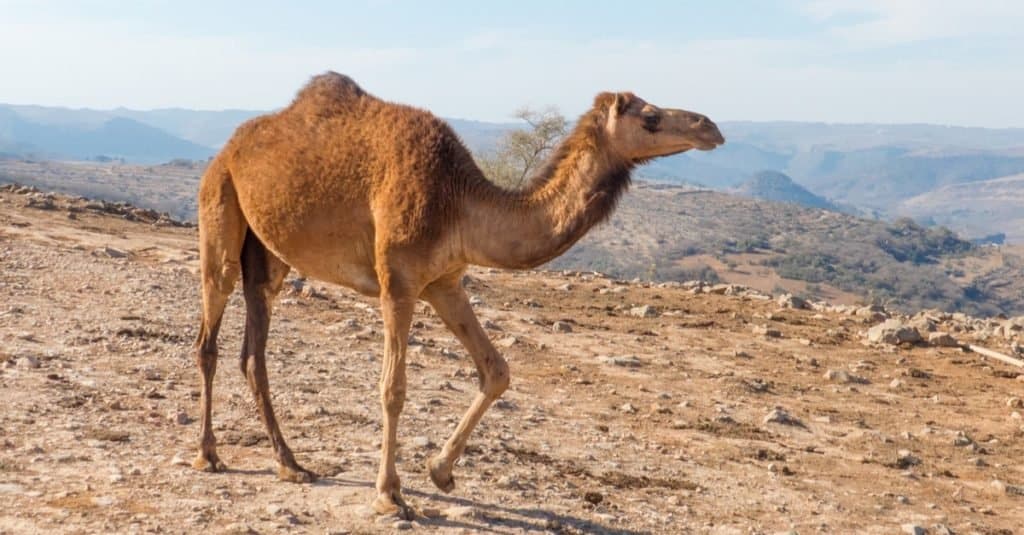
While no specific mention in the Bible points to the use of camels, the three Wise Men would not have been unlikely to use them to transport their goods.
©Fabian Junge/Shutterstock.com
As it is told, when Jesus was born in the old city of Bethlehem, three Wise Men arrived to worship him and bring him gifts. These three men were the kings of Sheba, Arabia, and Egypt and traveled night and day on their sturdy camels. Nowadays, Christmas tales are not complete without these incredible animals who helped the Wise Men reach Bethlehem.
There is no actual mention of camels in the Bible. It is hard to imagine the Nativity of Jesus without them, though. Anyhow, the Three Kings would not have been unlikely to use camels. This is because people used them to transport goods through the desert for thousands of years.
Camels are fascinating, and they make an excellent choice for long journeys through the desert. They can carry up to 1,000 pounds, live up to ten months without water, and walk huge distances without tiring.
Donkeys
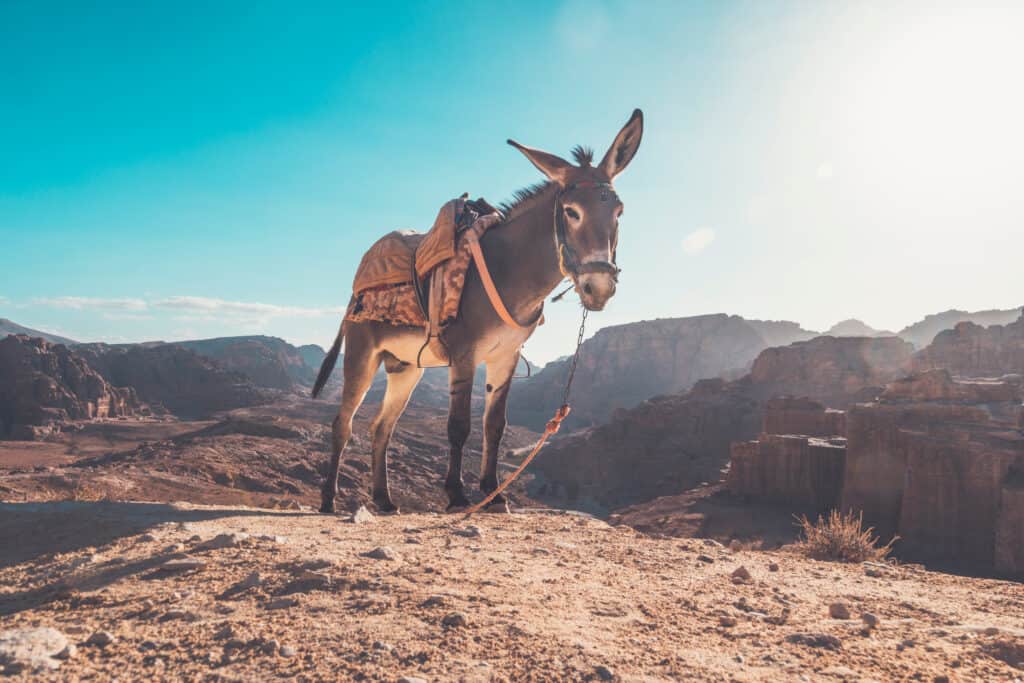
It is accepted that Mary, pregnant with Jesus, traveled with Joseph to Bethlehem on the back of a donkey.
©diy13/Shutterstock.com
Before reaching the city of Bethlehem, Mary and Joseph are said to have endured a terrible journey of 80 miles. It is generally accepted that Mary, pregnant and near due, traveled on the back of a donkey, an animal known for its endurance and loyalty. But this was not the only occasion where a donkey helped the Holy Family. Shortly after the birth of Jesus — they fled to Egypt again on one of these creatures.
Friendly and intelligent, donkeys are ever-present today in Christmas depictions and often appear in all kinds of Christian artworks. Most people see them as a sign of humility for their mild temper and low profile. Also, donkeys are some of the most important domesticated animals in history.
Donkeys are generally stronger than horses and can pull as much as twice the weight they can carry. These noble creatures have helped humans for thousands of years. They ultimately enabled the trade and expansion that molded the world we know today.
Robins
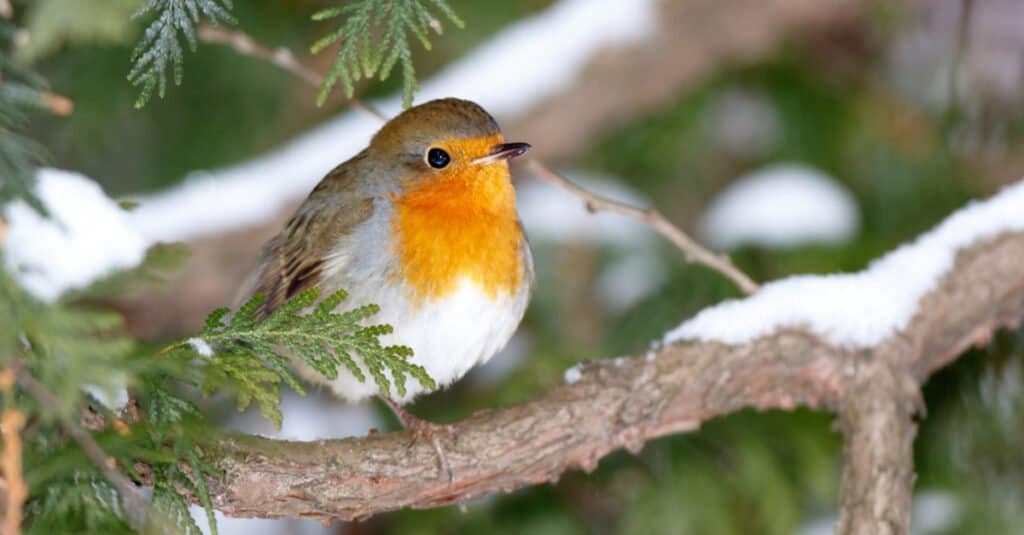
While many versions of the tale tell how robins got their red breast, one says that it was when a robin saved baby Jesus from a raging fire, scorching its plumage in the process.
©Vishnevskiy Vasily/Shutterstock.com
The story about how robins came to be is still famous during Christmas. One version says that, shortly after being born, baby Jesus was resting by a fire when it started blazing badly. A brown robin noticed this and stood between the fierce fire and the baby. In so doing, it saved Jesus from injury but was ultimately scorched red, thus getting its famous look.
The old Christian tale is not the only reason for the bird’s link with Christmas. Robins have been a common sight in European winters for centuries. Further, people have grown fond of them, as they add color to the snowy landscape. In the mid 19th Century, British postmen started wearing red jackets, enticing people to nickname them “robins.” Since that moment, the red-breasted bird started appearing widely in holiday cards, carrying letters with their beaks, and so on.
Though not as popular as they once were, robins are still a symbol of holidays for many and a lovely sighting in late winter when they return for mating season. In the UK, their love for the robin is so strong they declared it the national bird in 1960.
Sheep
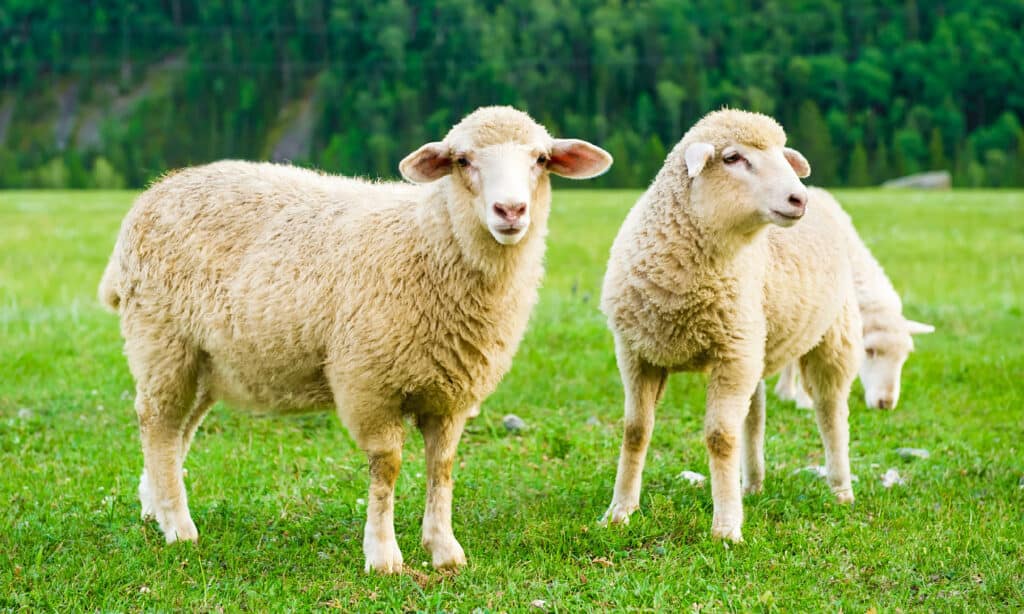
It’s said that a shepherd and his flock of sheep were the first to hear the news that Jesus was born.
©iStock.com/idal
Sheep are the animal most commonly associated with faith, and they appear extensively in Christian mythology. They are always present in Nativity scenes, Christmas cards, plays, and more. For centuries, sheep were seen as a sign of new beginnings, which is precisely the feeling many of us get from the holiday season.
If not the first, sheep were one of the earliest animals to be domesticated by humans, making them as gentle, social, and peaceful as we know them today. Humans and sheep have lived in harmony for millennia, and these creatures were fundamental for many native populations to thrive worldwide. They are easy to breed and require so little care that almost every community has relied on them in some capacity.
According to tradition, a shepherd and his flock of sheep were the first to receive the news that Jesus was born. Such stories have made a lasting impact on holiday traditions, so much so that nowadays, even if not as present, they continue to shape how we perceive and celebrate Christmas.
Up Next…
- The 12 Animals of Christmas From Around the World
- Discover the Largest Christmas Tree Ever
- 12 Incredible Reindeer Facts for Christmas
- The 3 Most Amazing Mythical Creatures You’ve Ever Seen
The photo featured at the top of this post is © den-sau-pin/Shutterstock.com
Thank you for reading! Have some feedback for us? Contact the AZ Animals editorial team.






